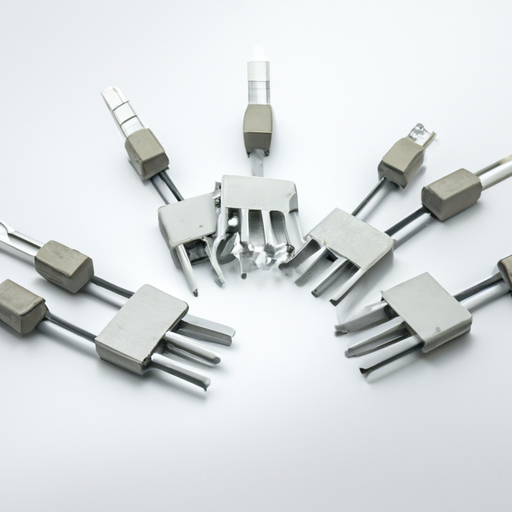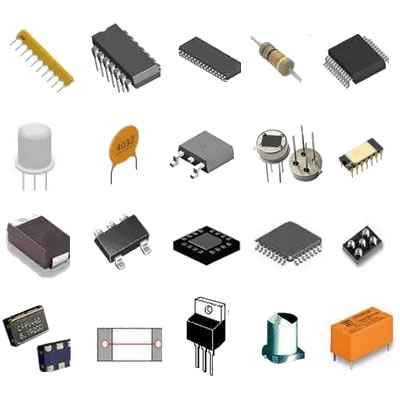Popular Models of Neutral Point Grounding Resistors
I. Introduction
A. Definition of Neutral Point Grounding Resistors
Neutral Point Grounding Resistors (NPGRs) are critical components in electrical systems, particularly in three-phase power systems. They are used to connect the neutral point of a transformer or generator to the ground through a resistor. This connection helps to limit the fault current during ground faults, ensuring the safety and stability of the electrical system.
B. Importance of Grounding in Electrical Systems
Grounding is a fundamental aspect of electrical engineering, providing a reference point for voltage levels and a path for fault currents. Proper grounding enhances the safety of electrical installations, protects equipment from damage, and minimizes the risk of electrical shock to personnel. Neutral point grounding, specifically, plays a vital role in managing transient overvoltages and ensuring system reliability.
C. Purpose of the Article
This article aims to explore popular models of neutral point grounding resistors, highlighting their specifications, applications, advantages, and disadvantages. By understanding these models, electrical engineers and technicians can make informed decisions when selecting grounding resistors for their systems.
II. Overview of Neutral Point Grounding
A. Explanation of Neutral Point Grounding
Neutral point grounding involves connecting the neutral point of a power system to the ground. This connection can be achieved through various methods, including solid grounding, resistance grounding, and reactance grounding. Each method has its advantages and is suitable for different applications.
B. Types of Grounding Systems
1. **Solid Grounding**: In solid grounding, the neutral point is directly connected to the ground without any impedance. This method allows for immediate fault current flow, which can be beneficial for certain applications but may lead to high fault currents that can damage equipment.
2. **Resistance Grounding**: This method uses a resistor to connect the neutral point to the ground. The resistor limits the fault current during ground faults, reducing the risk of equipment damage and improving safety.
3. **Reactance Grounding**: Reactance grounding employs inductors to connect the neutral point to the ground. This method limits the fault current while allowing for some degree of fault detection.
C. Role of Neutral Point Grounding Resistors in Electrical Safety
Neutral point grounding resistors are essential for enhancing the safety and reliability of electrical systems. By limiting fault currents, they help prevent equipment damage, reduce the risk of electrical fires, and protect personnel from electrical shock.
III. Key Features of Neutral Point Grounding Resistors
When selecting a neutral point grounding resistor, several key features should be considered:
A. Resistance Value
The resistance value of the grounding resistor determines the amount of fault current that will flow during a ground fault. It is crucial to select a resistance value that balances safety and equipment protection.
B. Power Rating
The power rating indicates the maximum power the resistor can handle without overheating. It is essential to choose a resistor with an appropriate power rating for the specific application.
C. Insulation Class
The insulation class of the resistor determines its ability to withstand electrical stress. Higher insulation classes are suitable for applications with higher voltage levels.
D. Temperature Coefficient
The temperature coefficient indicates how the resistance value changes with temperature. A low temperature coefficient is desirable to ensure stable performance across varying environmental conditions.
E. Construction Materials
The materials used in the construction of the resistor affect its durability, performance, and cost. Common materials include stainless steel, aluminum, and ceramic.
IV. Popular Models of Neutral Point Grounding Resistors
A. Model 1: OhmGuard 1000
1. **Specifications**: The OhmGuard 1000 features a resistance value of 1000 ohms and a power rating of 10 kW. It is designed for medium-voltage applications.
2. **Applications**: This model is suitable for industrial plants, substations, and commercial buildings.
3. **Advantages and Disadvantages**: The OhmGuard 1000 offers excellent thermal stability and low maintenance requirements. However, its higher resistance value may not be suitable for all applications.
B. Model 2: ResistorPro 500
1. **Specifications**: The ResistorPro 500 has a resistance value of 500 ohms and a power rating of 5 kW.
2. **Applications**: Ideal for small to medium-sized electrical systems, including renewable energy installations.
3. **Advantages and Disadvantages**: This model is cost-effective and easy to install. However, it may not handle high fault currents as effectively as higher-rated models.
C. Model 3: SafeGround 2000
1. **Specifications**: The SafeGround 2000 features a resistance value of 2000 ohms and a power rating of 15 kW.
2. **Applications**: Suitable for large industrial applications and high-voltage systems.
3. **Advantages and Disadvantages**: The SafeGround 2000 provides excellent fault current limitation but may require more space for installation due to its larger size.
D. Model 4: FlexiResistor 750
1. **Specifications**: The FlexiResistor 750 has a resistance value of 750 ohms and a power rating of 7.5 kW.
2. **Applications**: This model is versatile and can be used in various applications, including commercial and industrial settings.
3. **Advantages and Disadvantages**: The FlexiResistor 750 is known for its compact design and flexibility. However, it may not be as robust as other models in extreme conditions.
E. Model 5: PowerSafe 1500
1. **Specifications**: The PowerSafe 1500 features a resistance value of 1500 ohms and a power rating of 12 kW.
2. **Applications**: This model is ideal for critical infrastructure, such as hospitals and data centers.
3. **Advantages and Disadvantages**: The PowerSafe 1500 offers high reliability and performance. However, its cost may be higher than other models.
V. Comparison of Popular Models
A. Performance Metrics
When comparing the performance of these models, factors such as resistance value, power rating, and thermal stability are crucial. Models like SafeGround 2000 excel in high-power applications, while ResistorPro 500 is more suited for smaller systems.
B. Cost Analysis
Cost is a significant consideration when selecting a neutral point grounding resistor. While models like ResistorPro 500 are budget-friendly, higher-rated models like PowerSafe 1500 may offer better long-term value due to their reliability.
C. Suitability for Different Applications
Each model has its strengths and weaknesses, making them suitable for different applications. For instance, SafeGround 2000 is ideal for high-voltage systems, while FlexiResistor 750 is better for compact installations.
D. User Feedback and Reviews
User feedback is invaluable when assessing the performance of these models. Many users praise the thermal stability of OhmGuard 1000, while others appreciate the cost-effectiveness of ResistorPro 500.
VI. Installation and Maintenance Considerations
A. Installation Guidelines
Proper installation is crucial for the effective operation of neutral point grounding resistors. It is essential to follow manufacturer guidelines and ensure that the resistor is installed in a location that allows for adequate ventilation.
B. Regular Maintenance Practices
Regular maintenance practices, such as inspecting connections and testing resistance values, are vital for ensuring the longevity and reliability of grounding resistors.
C. Troubleshooting Common Issues
Common issues with neutral point grounding resistors include overheating and resistance value drift. Troubleshooting these issues involves checking connections, ensuring proper ventilation, and replacing faulty components.
VII. Future Trends in Neutral Point Grounding Resistors
A. Technological Advancements
The future of neutral point grounding resistors is likely to be shaped by technological advancements, including the development of smart grounding systems that can monitor and adjust resistance values in real-time.
B. Increasing Demand for Safety and Reliability
As electrical systems become more complex, the demand for reliable and safe grounding solutions will continue to grow. This trend will drive innovation in the design and manufacturing of neutral point grounding resistors.
C. Environmental Considerations
Environmental concerns are becoming increasingly important in the electrical industry. Future models of neutral point grounding resistors may focus on sustainable materials and energy-efficient designs.
VIII. Conclusion
A. Summary of Key Points
Neutral point grounding resistors play a crucial role in ensuring the safety and reliability of electrical systems. Understanding the various models available, their specifications, and applications is essential for making informed decisions.
B. Importance of Choosing the Right Model
Selecting the right neutral point grounding resistor is vital for optimizing system performance and safety. Factors such as resistance value, power rating, and application suitability should guide the selection process.
C. Final Thoughts on Neutral Point Grounding Resistors
As electrical systems continue to evolve, the importance of neutral point grounding resistors will only increase. By staying informed about the latest models and trends, electrical professionals can ensure the safety and reliability of their systems.
IX. References
A comprehensive list of sources and further reading materials can be provided to enhance understanding and knowledge of neutral point grounding resistors and their applications.





